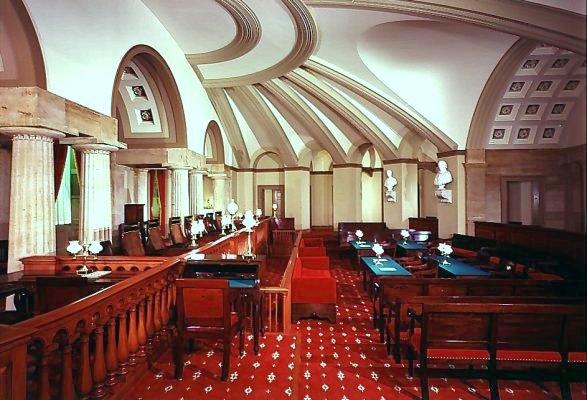 The Old Supreme Court chamber
The Old Supreme Court chamberThursday, February 22: The Limits of Liberty
 The Old Supreme Court chamber
The Old Supreme Court chamber
| By 1789, we have the Constitution ratified and the new government in operation. That leaves us, however, with the question of how to interpret the period from 1789 through 1801, when the framers were in firm control of the national government and the Constitution was being fleshed out. Should we view this period as the third phase of the constitution-making process? And, if so, what lesson should we draw from it. |
READINGS
secondary
Lynch, Negotiating the Constitution, Sourcebook, pp.71-86; read only pp. 75-78, 84-86 closely. |
Rakove, Original Meanings, pp. 339-365. |
The Lynch book would have been worthy of assigning as a required purchase but for its rather narrow chronological scope. It offers a detailed look at the bitter--and very important--constitutional debates of the 1790s. For while the passage of the Bill of Rights completed the formal writing of the Constitution, historians continue to debate when exactly the constitutional structure became firmly established. Some point to the peaceful transfer of power after the 1800 election, others to the establishment of judicial review in 1803. In any event, this decade featured key debates over executive power, the Constitution and foreign affairs, and the First Amendment. |
documents:
STUDY QUESTIONS
1.) To what extent did the Virginia Resolutions represent a continuation of Anti-Federalist political thought? |
2.) What--if anything--does the passage of the Alien and Sedition Acts say about the framers' attitudes toward the Bill of Rights? |
3.) What do you consider the most unexpected development in constitutional history between 1789 and 1800? |